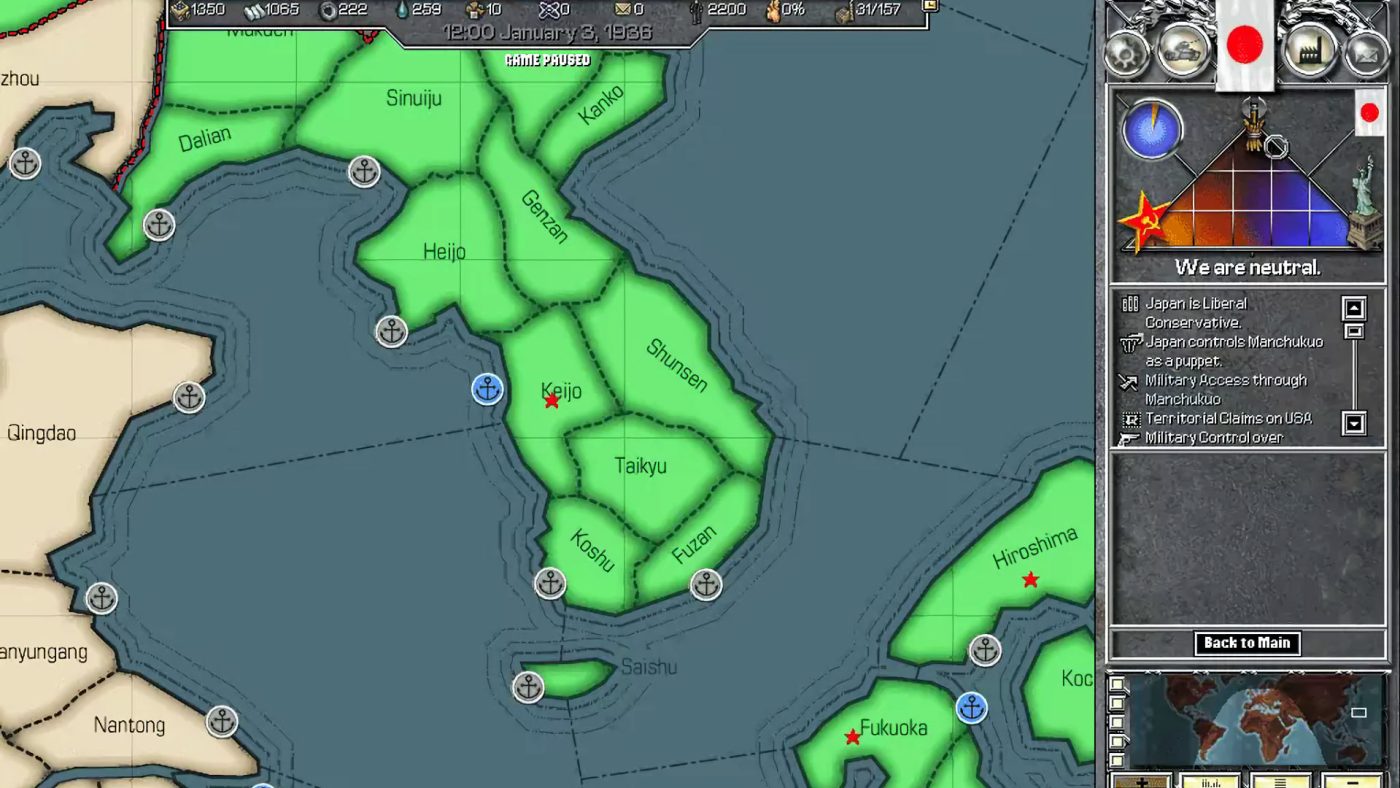The early 2000s was a period of transformation for the gaming industry, particularly in the realm of strategy games. Among the titles that emerged during this time, Hearts of Iron stands out as a seminal work that redefined the grand strategy genre. Developed by Paradox Interactive, Hearts of Iron offered a complex and immersive simulation of World War II, captivating strategy enthusiasts with its depth and historical accuracy.
An Ambitious Undertaking
Hearts of Iron was released at a time when strategy games were evolving rapidly, with titles like Europa Universalis and Civilization III setting high standards. What set Hearts of Iron apart was its ambitious scope; it aimed to simulate the entire global conflict of World War II, allowing players to control any nation that existed during that period. This was a monumental task, considering the intricate geopolitical, economic, and military dynamics involved.
The game’s engine was derived from Paradox’s earlier success, Europa Universalis, but Hearts of Iron introduced several innovations that catered specifically to the World War II setting. The real-time strategy framework allowed for a more fluid and continuous gameplay experience, as opposed to the turn-based systems prevalent in other strategy games of the time. This decision enhanced the sense of urgency and realism, as players had to manage multiple fronts and make quick, strategic decisions.
A Realistic Depiction of World War II
One of the most commendable aspects of Hearts of Iron is its dedication to historical realism. The game meticulously recreated the political and military landscape of the late 1930s and early 1940s, offering players a detailed representation of the era. From the economic policies to the technological advancements, every element was designed to reflect the historical context accurately.
Players had to manage various aspects of their chosen nation, including diplomacy, military strategy, and resource allocation. The game’s technology tree allowed for the development of historically accurate weapons and tactics, while the political system enabled players to engage in espionage, form alliances, and influence global events. This level of detail made Hearts of Iron not just a game, but a historical simulation that educated players about the complexities of World War II.
Complex Strategy and Gameplay
The depth of Hearts of Iron’s gameplay was both its greatest strength and a potential drawback for some players. The game’s complexity required a significant investment of time and effort to master. Newcomers to the grand strategy genre often found the learning curve steep, with a plethora of menus, statistics, and options to navigate.
However, for those willing to invest the time, Hearts of Iron provided an unparalleled strategic experience. The game’s AI was formidable, offering a challenging and unpredictable opponent. The ability to pause the game and issue commands allowed for careful planning and execution of complex strategies, whether it was coordinating a multi-front invasion or managing a nation’s economy during wartime.
The naval and air combat systems were particularly noteworthy, as they added layers of strategy that were often overlooked in other World War II games. Players had to consider not only the composition of their armies but also the logistical challenges of maintaining supply lines and ensuring air superiority. This multifaceted approach to warfare highlighted the interconnected nature of military operations during World War II.
Criticisms and Challenges
Despite its many strengths, Hearts of Iron was not without its criticisms. The game’s steep learning curve and complex interface were daunting for many players, leading to frustration and a sense of being overwhelmed. Paradox Interactive’s reputation for releasing games that required post-launch patches to address bugs and balance issues was also a point of contention. Hearts of Iron was no exception, and the initial release was plagued by technical problems that affected gameplay.
Another criticism was the game’s sometimes inconsistent AI behaviour. While generally competent, the AI occasionally made illogical decisions that broke immersion. For instance, minor nations might engage in unrealistic military actions, or major powers might fail to capitalize on strategic opportunities. These quirks, though relatively minor, detracted from the overall experience for some players.
The Legacy and Influence
The influence of Hearts of Iron on the grand strategy genre cannot be overstated. Its success led to a series of sequels and expansions, each building on the foundation laid by the original game. Hearts of Iron II, released in 2005, refined many of the mechanics and addressed several criticisms of its predecessor, solidifying the franchise’s reputation for depth and historical accuracy.
The Hearts of Iron series continued to evolve, with HOI III and HOI IV introducing even more detailed simulations and user-friendly interfaces. These sequels expanded the scope of the game, incorporating new features like detailed province management, advanced military planning tools, and more sophisticated AI behaviour. Each iteration attracted a dedicated community of players, many of whom contributed to the game’s development through mods and feedback.
Hearts of Iron also inspired numerous copycat games and influenced other strategy titles. The game’s emphasis on historical accuracy and complex strategic planning set a benchmark that many developers aspired to achieve. Titles like Strategic Command and Making History drew heavily from Hearts of Iron’s mechanics, attempting to capture the same depth and realism.
Conclusion
Hearts of Iron stands as a landmark in the history of strategy games. Its ambitious attempt to simulate World War II in all its complexity set a new standard for the genre. Despite its initial flaws and steep learning curve, the game’s dedication to realism and depth won it a passionate following and established Paradox Interactive as a leading developer of grand strategy games.
The legacy of Hearts of Iron is evident in the continued success of its sequels and the ongoing influence it has on the genre. For strategy enthusiasts and history buffs alike, Hearts of Iron remains a quintessential experience, offering a deep and immersive journey into the tumultuous era of World War II. Its place in gaming history is well-deserved, marking it as a true classic that continues to inspire and challenge players more than two decades after its release.


